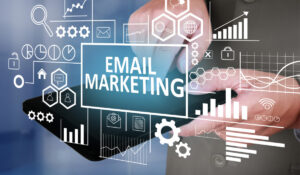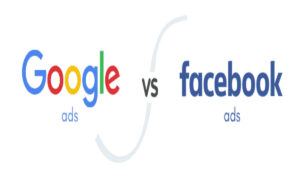Email marketing is still one of the best ways to connect with clients in the rapidly evolving digital world of today.
But with crowded inboxes and shorter attention spans, sending generic emails isn’t enough anymore.
Businesses that wish to stand out need to employ email automation that sends timely, customized and specific messages based on each subscriber’s interests and behaviors.
This not only saves time but also boosts engagement rates like opens, clicks, and conversions.
Below, we’ll look at five ways that email automation can help you increase audience engagement and strengthen your relationships with them.
What is Email Automation?
Using software to send subscribers or customers timely, pertinent, and targeted emails based on preset triggers or schedules is known as email automation.
Instead of creating and sending emails by together, businesses now have automated workflows that send messages automatically when certain events take location, such when a user signs up reaches a milestone, ceases to purchase something, or receives a newsletter.
This technology enables marketers to deliver the right message to the right person at exactly the right time — increasing relevance and engagement while saving time and resources.
Email automation makes it simpler to precisely and efficiently manage and expand communication initiatives, from welcome emails to transactional messages, promotional offers, and follow-ups.
Generate Quality Leads with Segmented Emails

The method of segmentation involves splitting up your email list into smaller, more focused groups according to shared traits or habits.
This approach ensures that your emails are relevant, personalized, and valuable to each recipient — which drastically increases the chances they’ll engage.
Why Segmentation Matters
Sending generic emails to your entire list wastes opportunities.
For example, a subscriber who just signed up isn’t interested in receiving a discount code for a product they haven’t explored yet.
Meanwhile, loyal customers might want exclusive access to new releases or VIP offers.
How to Segment Effectively
- Demographic Segmentation: Use age, location, gender, or job role to tailor your messaging. A fitness brand might send different workout plans to men and women, or to beginners versus advanced users.
- Behavioral Segmentation: Track how subscribers interact with your website, past emails, or purchases. For instance, if a subscriber frequently visits a particular product page but hasn’t bought yet, send them targeted content or an incentive related to that product.
- Engagement-Based Segmentation: Identify inactive subscribers and re-engage them with special offers or fresh content to rekindle interest.
The Result: Quality Leads
Segmented emails don’t just improve open and click rates — they generate quality leads who are more likely to convert because they receive content that matches their interests and stage in the buying journey.
Increase Conversion with Transactional Emails
Transactional emails — such as order confirmations, shipping updates, password resets, and account notifications — often have significantly higher open rates than marketing emails.
Since they are expected and relevant, these emails represent an untapped opportunity to increase conversions and deepen customer loyalty.
How to Leverage Transactional Emails
While these emails serve a primary function, they can also include personalized recommendations or cross-sell offers without disrupting the user experience.
- Order Confirmation: Thank customers, provide estimated delivery, and suggest complementary products or accessories.
- Shipping Notifications: Include links to track the shipment plus invitations to review the product or explore related items.
- Password Reset or Account Alerts: Remind users of benefits they might be missing or upcoming promotions.
Why This Works
Subscribers are more likely to read and engage with transactional emails since they are eagerly awaited.
Automation ensures these emails are timely and relevant, enhancing customer satisfaction and boosting the chance of repeat purchases.
Drip Campaigns for More Sales
Drip campaigns, additionally referred to as automated email sequences, are an effective means to maintain leads and move prospects along the sales funnel by using a series of prepared emails.
What Makes Drip Campaigns Effective
By breaking the advertising message into small portions, drip programs gradually boost subscribers’ trust, knowledge, and motivation.
As opposed to bombarding users with information, you send them well-timed content that moves them closer to making a purchase.
Types of Drip Campaigns
- Welcome Series: When someone signs up, a welcome drip introduces your brand, sets expectations, and delivers your best content or offers. This can include social proof, FAQs, and special discounts.
- Educational Content: Share blog posts, tutorials, case studies, or tips that address subscriber pain points and highlight the benefits of your products or services.
- Abandoned Cart Sequences: Remind customers who left items in their cart to complete their purchase, often sweetening the deal with limited-time offers or free shipping.
- Re-Engagement Campaigns: Win back inactive subscribers with special deals, surveys, or personalized messages.
The Impact on Sales
Drip campaigns create consistent touchpoints that keep your brand top of mind and build confidence.
Over time, this nurtures leads into customers and increases your overall sales volume.
Automation Enables Personalized Email Communication
There’s more to personalization than merely calling a subscriber by name.
It involves offering offers and substance that can be tailored to each person’s tastes, behaviors, and lifecycle stages, which greatly boosts engagement.
Going Beyond First Names
With email automation, you can incorporate:
- Dynamic Content Blocks: Show different content blocks in the same email based on subscriber data. For example, display winter jackets to subscribers in cold climates and swimwear to those in warmer areas.
- Behavioral Triggers: Automatically send emails based on actions like browsing products, downloading resources, or completing a purchase.
- Milestone Celebrations: Send birthday greetings, subscription anniversaries, or loyalty rewards to make customers feel appreciated.
Benefits of Personalized Automation
Personalized emails have been shown to increase open rates by up to 29% and click rates by 41%.
When customers are appreciated and understood, they are more likely to engage, make purchases, and stick with a business
Spread Brand Awareness with Consistent Communication
Email automation isn’t just about conversions — it’s a powerful tool for long-term brand building.
Automated newsletters, event invitations, and updates keep your audience informed and connected.
Why Consistency Builds Awareness
In crowded markets, repetition matters. Regular communication ensures your brand stays on the subscriber’s radar, helping to establish trust and authority over time.
Ways to Use Automation for Awareness
- Schedule monthly or weekly newsletters with valuable content and company news.
- Automatically invite customers to webinars, product launches, or special events.
- Share curated content or user-generated content to foster community and trust.
The Outcome
By consistently delivering relevant content, you build a loyal audience that associates your brand with expertise, reliability, and value — paving the way for future sales and referrals.
Conclusion
Email automation is a powerful tool that, when leveraged correctly, can significantly enhance engagement rates.
By segmenting audiences, personalizing content, implementing drip campaigns, optimizing for mobile, and continuously analyzing performance, businesses can create email marketing strategies that truly resonate with subscribers and drive desired actions.
In an age where attention spans are short and inboxes crowded, these strategies will help your emails stand out and foster meaningful connections with your audience.
FAQ’s
How soon should I start using email automation for my business?
You don’t have to wait—email automation is beneficial whether you’re just starting out or already have a large customer base. Even simple automated emails like welcome messages or order confirmations can make a big difference in engagement and customer experience. The sooner you start, the faster you’ll save time and build stronger connections with your audience.
Will automated emails feel too robotic or impersonal to my customers?
Not if you use automation thoughtfully! Automation allows you to send highly personalized and relevant content based on individual behavior and preferences. Instead of generic blasts, your subscribers receive emails that feel tailor-made for them. When done right, automated emails can actually feel more personal and timely than manually sent messages.
How do I know if my email automation is actually working?
Measuring success is key. Track important metrics like open rates, click-through rates, conversion rates, and even unsubscribe rates to understand how your emails perform. An increase in engagement and sales after launching automation is a good sign. Also, pay attention to feedback and any direct responses you get, as they offer valuable insight into what’s resonating with your audience.
Can email automation help re-engage subscribers who have become inactive?
Definitely! One of the biggest advantages of automation is that you can create re-engagement campaigns specifically designed to win back inactive subscribers. These emails can remind them of the value your brand offers, share new updates, or provide exclusive offers to spark renewed interest. It’s a cost-effective way to breathe new life into your email list.
Is email automation expensive or complicated to set up?
Not necessarily. Many modern email marketing platforms include automation features in their basic packages, making it accessible for businesses of all sizes. While there is a small learning curve to setting up workflows and segmenting your audience, once in place, automation saves you considerable time and effort. The investment upfront pays off by allowing you to scale your marketing without increasing your workload.



